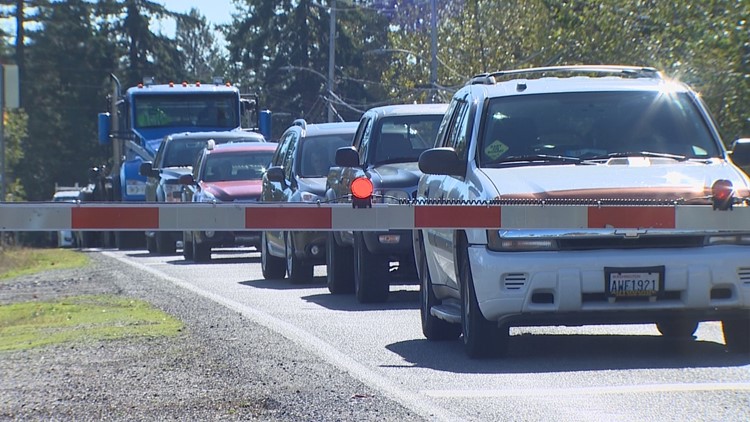A federal facility to inspect trains for dangerous cargo is putting people at risk for all kinds of issues, according to city leaders in Blaine.
Southbound trains running from Canada through the border town slow to a crawl so they can be x-rayed and inspected by a vehicle and cargo inspection system known as VACIS.
When the signals sound near their neighborhood, Gary and Renate Tomsic know they're going to be stuck at home for a while.
"If they stop, you never know how longs it's gonna take to get it moving again," says Renate. "We've seen it as long as two hours."
The couple's entire community routinely gets cut off from the rest of the world because the only road in and out crosses the tracks.
They worry about delays for emergency services, even though there is a fire station less than a mile away.
"I's real worrisome, especially if there is a fire," says Renate. "What if there's a fire and they can't get to us in 2 minutes? What can happen?"
City Manager Michael Jones gets stuck in the mess all the time.
"We've seen people driving drive into oncoming traffic to go around stopped cars, making illegal u-turns," he says. "Traffic delays of 20 to 30 minutes are pretty common."
In addition to being a traffic and public safety risk, Jones says kids are routinely late to school, parents are late to work and people are reluctant to come downtown to shop for fear of getting stuck.
"It's an economic development issue for us. If people can't go where they need to be then they stop making the effort and they go different places to do different things."
VACIS was put in place a decade ago by Homeland Security to inspect cargo coming into the country for terror threats, drugs and human trafficking.
Blaine Mayor Bonnie Onyon argues the feds put the station at just about the worst possible place, and they won't move it.
"We weren't really consulted in the process. That upset us a little bit," she says. "The machine was already in place by the time we got to address the issue."
City leaders are now asking the state and federal governments for a $20 million overpass to get around the problem. They have received about $500,000 for a design study. A bridge, if it is approved at all, is likely at least five years away.



